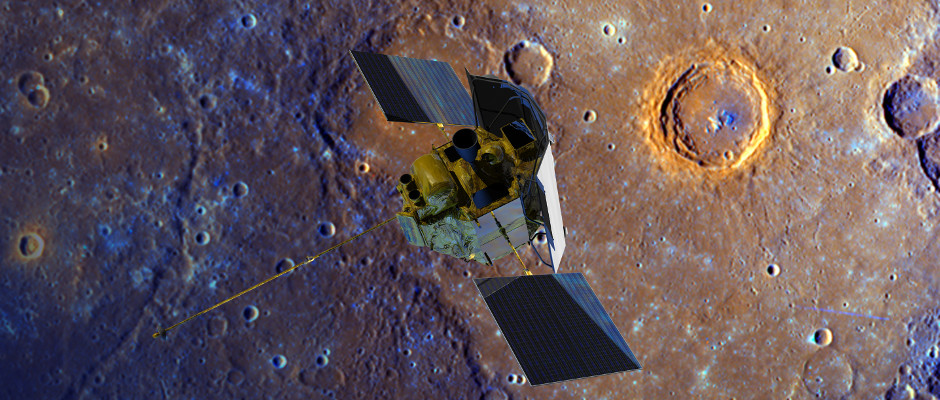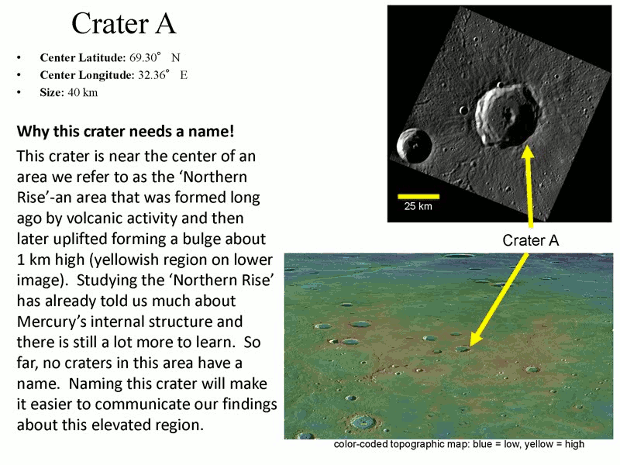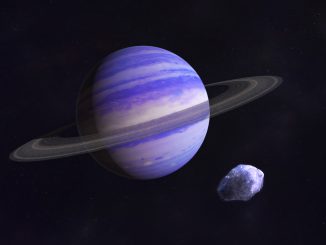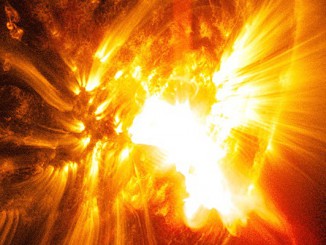
NASA’s MESSENGER spacecraft has been in orbit about Mercury since March 2011. The mission’s EPO team is led by Julie Edmonds of the Carnegie Institution for Science.
According to the International Astronomical Union (IAU) — the governing body of planetary and satellite nomenclature since 1919 — all new craters on Mercury must be named after an artist, composer, or writer who was famous for more than 50 years and has been dead for more than three years. See the current list of named Mercury craters.
The MESSENGER spacecraft has far surpassed expectations both in the duration of the mission and in the quality and quantity of data. The mission will end this spring as the tiny craft succumbs to gravity and impacts on Mercury. The EPO team organised the competition to celebrate the mission’s achievements.
Edmonds advises participants to first research the artist, composer, or writer under consideration before filling out the contest entry. “Once online, registrants will be asked to submit a short description of their chosen individual’s contributions to their field, as well as an authoritative source for background information,” she said.
The name cannot have any political, religious, or military significance. Nor can other features in the Solar System have the same name. For example, Ansel Adams is not eligible because there is a feature on the Moon with the name Adams (even though it was not named for Ansel). Participants can check their ideas against the list of named Solar System features and enter the name in the “Search by Feature Name” box in the upper right corner.
“This brave little craft, not much bigger than a Volkswagen Beetle, has travelled more than 8 billion miles since 2004 — getting to the planet and then in orbit,” Edmonds said. “We would like to draw international attention to the achievements of the mission and the guiding engineers and scientists on Earth who have made the MESSENGER mission so outstandingly successful.”
The goal of MESSENGER was to take 2,500 images of the planet, but is has returned more than 250,000 images. “We now have a detailed, high-resolution map of the entire planet,” Edmonds noted. “As scientists study the incredible data returned by MESSENGER, it becomes important to give names to surface features that are of special scientific interest. Having names for landforms such as mountains, craters, and cliffs makes it easier for scientists and others to communicate.”
Enter the contest online at http://namecraters.carnegiescience.edu/



